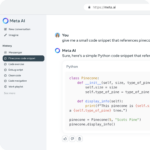
The relentless demands of digital transformation initiatives mean that application development (AD) teams have to find ways to increase their productivity. Artificial intelligence (AI) and machine learning (ML) are now good options to augment AD teams and increase their output.
We predict that, by 2022, at least 40 percent of new AD projects will have an AI-powered ‘virtual developer’ on their team, since AI and ML have immediate potential in the realm of quality assurance and application testing. Automating these time-consuming tasks will support new ways of working in DevOps, mobile and Internet of Things environments. What’s more is that through 2023, human rather than technical factors (like AI and ML) will cause 90 percent of agile or DevOps initiatives to miss customer and product expectations.
Human experts should focus on specialized problems
This next phase of software development is called augmented software development (ASD). This uses AI and ML to automate code preparation, validation and generation. ASD will allow human experts to focus on those specialized problems that are most in need of human intuition and creativity, while delegating the underlying “technical plumbing” to smart machines.
The goal of ASD is for developers to spend less time coding application infrastructure, and more time acting on the relevant insights. But it’s no panacea. Our AI co-developers will struggle to correctly interpret software requirements and user stories expressed in the ambiguous and context sensitive ways that are typical of natural language. Human developers, therefore, must learn the role of translator. They need to turn conversations with end users and stakeholders into precise tests and logic for their AI co-developers. To do so effectively, we recommend that developers and AD leaders advance and use their abilities in test driven development (TDD) and behavior-driven development (BDD) techniques.
Training AIs
TDD and BDD techniques provide a framework to train the AIs that will carry out most of the repetitive labor in future development work. Moreover, these tests and techniques themselves can be automated. This will in turn accelerate the process of ML by providing immediate feedback on the success of AI-generated code.
It’s certainly a shift in skills and culture to orient AD teams more toward training AIs to augment their own capabilities, but the shift will allow teams to better address the kind of skills shortages that will only get more pronounced in the digital world. AD workloads will increase exponentially in the coming years, which is why it’s crucial
AD leaders begin the process now. AD leaders are left with a simple choice: Hire exponentially more employees to cope with the increased workload in a market already short on these skills, or make each developer exponentially more productive. The latter option is the one that will deliver the best outcome for both the entire organization and the AD team.
For the organization, hiring and staff costs can be kept down while AD output increases. For the AD team, the human work becomes less routine and more about solving unique challenges, which is more rewarding for most people. This is why Gartner advocates an ASD approach as something for AD leaders to examine immediately and as a way to navigate the future of AD in their organizations






